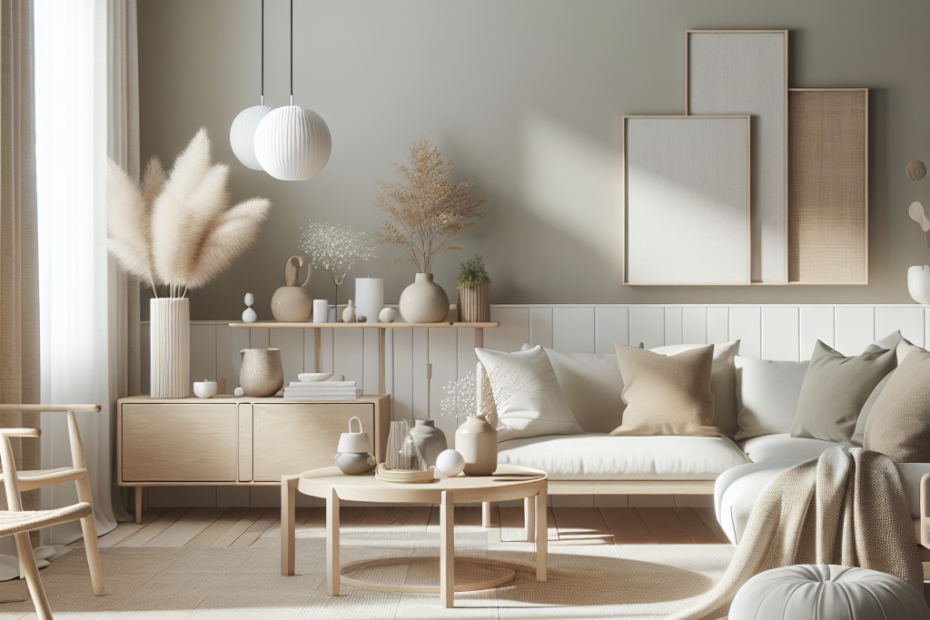“`html
The Power of Neutral Tones in Scandinavian Interiors
They are often drawn towards the calming and timeless appeal of neutral tones in Scandinavian design. As more people seek simplicity and tranquility in their homes, Scandinavian interiors, characterized by their minimalist yet cozy nature, have gained immense popularity worldwide. The magic of these spaces often lies in their use of neutral tones which create a serene and inviting atmosphere.
Understanding the Essence of Scandinavian Design
Scandinavian design originates from the countries of Northern Europe, such as Sweden, Norway, and Denmark. These regions embrace simplicity, functionality, and beauty. They use elements inspired by nature and the surrounding environment. One of the key aspects of Scandinavian interiors is the significant use of neutral colors—particularly whites, grays, beiges, and soft pastels—harmonizing perfectly to enhance light and space within a room.
The Role of Neutral Tones
Neutral tones are essential as they form the canvas that highlights natural textures and materials in Scandinavian homes. According to a survey by Statista, 38% of respondents in Nordic countries stated that interior design inspired by nature was crucial to them. This preference highlights the tendency to use neutral tones which mirror the understated beauty found in nature.
Advantages of Using Neutral Tones
- Versatility: Neutral colors are versatile and pair well with other colors and patterns. This makes it easier to replace or update furniture and accessories.
- Timelessness: Without being subjected to design trends, neutral tones provide a timeless quality to interiors that can evolve with personal tastes.
- Creating Space and Light: In Scandinavian countries where natural light is limited, they use neutral tones to make rooms appear larger and brighter.
Incorporating Neutral Tones in Interiors
They can start incorporating neutral tones by selecting the right paint for walls. White and light gray are frequently chosen to maximize the light and create a peaceful backdrop. Furniture items, such as sofas and dining tables in wood tones, blend well with this backdrop. Adding textural elements like wool, linen, and leather can deepen the sense of warmth and comfort.
| Color Name | Description |
|---|---|
| Warm White | A soft white with a hint of warmth, ideal for walls. |
| Light Gray | Perfect for an airy and elegant presence, complements most colors. |
| Beige | A classic neutral, adds subtle warmth. |
| Pale Blue | Hints of blue for a chic yet calming vibe. |
Integrating Textures and Organic Elements
Beyond paint colors, neutral tones also shine through in textures and organic elements found in Scandinavian homes. Natural woods, stone accents, and indoor plants add layers of sophistication without overwhelming the senses. They use textures impeccably by incorporating plush cushions, tactile rugs, and understated artwork to bolster the soft, neutral palette.
Statistics on Scandinavian Design Trends
Scandinavian design has seen a 23% increase in interest over the past decade, according to research by Google Trends. Furthermore, neutral colors have a substantial influence on homebuyers with 75% preferring neutrals over bold color choices, as noted in a report by Zillow.
Key Takeaways
- Neutral tones are fundamental in achieving the minimalist aesthetic of Scandinavian interiors.
- They offer versatility and timelessness, allowing personal style evolution without frequent redecorating.
- Proper use of textures and organic materials complements neutral colors, adding depth and warmth to spaces.
- Interest in Scandinavian design continues to rise, emphasizing the global appeal of neutral tones.
FAQ
What are the main colors used in Scandinavian design?
Scandinavian design primarily features neutral colors like whites, grays, and beiges, complemented by soft pastels.
Why are neutral tones preferred in Scandinavian interiors?
They prefer neutral tones because they create a calming effect, enhance light and space, and offer versatility in styling.
Can vibrant colors be used in Scandinavian design?
Yes, vibrant colors can be used sparingly as accents, allowing the neutral base to maintain a balanced and cohesive look.
How do textures play a role in neutral-themed interiors?
Textures such as wool, linen, and leather add visual interest and warmth, enhancing the aesthetic of neutral settings.
Is Scandinavian design suitable for small spaces?
Absolutely, Scandinavian design is ideal for small spaces due to its emphasis on light colors, minimalism, and functionality.
“`
